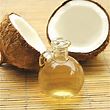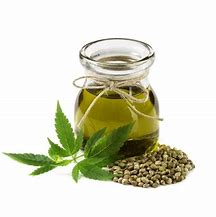Fractionated Coconut Oil





-
Fractionated Coconut Oil
- Fractionated coconut oil is coconut oil that has been processed or “fractioned” to create a very shelf-stable oil. The fraction of the oil that is used is very high in saturated fat, and this product can be used in a wide variety of ways. Many companies that carry materials for making cosmetics stock fractionated coconut oil, and it can also be purchased from massage and soap suppliers. The cost for this oil varies, depending on global demand.
- Coconut oil itself is extracted from the meat of the coconut fruit. Even before processing, it is very high in saturated fat, with a content that hovers around 90%. In pure form, coconut oil is solid at room temperature, with a milky color. When refined or fractionated, it becomes clear to yellow in color, and it is liquid at room temperature. The refining process removes impurities that could cause the oil to become rancid over time.
- The big advantage to fractionated coconut oil over regular coconut oil is that it is very shelf-stable. It will not become rancid, unlike unrefined oils, making it easier to work with. It is also capable of handling very high heat, which can be a distinct bonus, and it can be easier to work with than solid coconut oil. Thanks to the fact that it has a long shelf life, it does not require special storage and handling procedures, beyond keeping it in a cool dry place.
- One common use of fractionated coconut oil is as a carrier oil for essential oils and massage. The oil is light and non-greasy, but it penetrates the skin very well, making it highly suitable for the delivery of essential oils. It can also be used as an intensive moisturizer, especially on areas like the face, where the skin is known for being delicate. This type of coconut oil also makes a good base for body scrubs and other body care products.
- Soapmakers also like to work with fractionated coconut oil, favoring it for its light, even bubbles and neutral odor. It can also be whipped and blended into moisturizing creams for use as an intensive moisturizer.
- This oil product is not hypoallergenic. Some people may experience a reaction to it, and people who have not used this product before may want to try testing pure oil on a small patch of skin before applying it to the whole body. If redness, rash, or itching develop after using fractionated coconut oil, it is a sign of a potential allergy to the oil.
- Reference: WiseGeek.com
Articles-Most Read
- Home
- Contact Us
- Coconut Oil-2
- Absorption Ratings for Carrier Oils
- Cold Pressing Method
- What are Essential Fatty Acids
- Cherry Kernel Oil
- Fixed Oils and Skin Penetration
- Hempseed Oil
- Almond Oil
- Cocoa butter
- Camelina Oil
- Antibacterial Effects Of Carrier Oil
- Coconut Oil
- Lime Blossom Oil (macerated)
- Carrot Oil, Wild Carrot Oil (macerated)
- Apricot Kernel Oil
- Kukui Nut Oil
- Jojoba Wax
- Pumkin Seed Oil - Cucurbita maxima, C. pepo
- Passion Flower OIl (Macerated)
- Hydrocotyle Oil (macerated)
- Palm Kernel Oil
- Rapeseed Oil - Carrier Oil
- Nutrients
Who's On Line
We have 137 guests and no members online
Articles-Latest
- How to Make Homemade Olive Oil: A Step-by-Step Guide
- 20 Evidence-Based Aloe Vera Oil Benefits For Skin, Hair & Health
- Peanut oil - Cold pressed - Are There Health Benefits? How To Make
- What Are the Health Benefits of Black Seed Oil?
- Comfrey oil Infused
- Chamomile Flowers Infused Oil
- Calendula Flowers Infused Oil
- Arnica Flowers Infused Oil
- How To Make Herb-Infused Oils
- DIY avocado oil for healthy skin
- How To Make Coconut Oil
- 8 Benefits of Mustard Oil, Plus How to Use It
- SHOREA STENOPTERA SEED BUTTER
- Shea Butter- 7 Amazing Benefits Of Shea Butter
- Monoi Oil For Hair & Skin
- Mango Seed Oil
- Cohune Oil Is The Next Big Thing
- Brazil Nut OIl
- 7 Impressive Benefits Of Allspice
- Camelina Oil Benefits, Uses, and Side Effects




